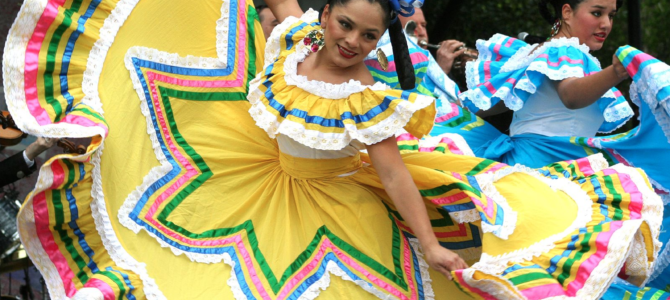
Today is supposed to be a day in which many Americans, especially those of Mexican descent, celebrate Cinco de Mayo. Of course, given the concerns over the COVID-19 pandemic, all Cinco de Mayo celebrations and parades across the country have joined the list of all the other “nonessential” activities and have either been canceled or, as in my local community, celebrated via online activities.
While this is certainly a huge disappointment for many Americans, it is something we all will be getting used to for the foreseeable future. However, in the same way this lockdown has caused many of us to reevaluate what we can live without, perhaps a year without a Cinco de Mayo celebration is the perfect time to examine its essential nature.
Cinco de Mayo is often mistakenly thought to be Mexico’s Independence Day (which is Sept. 16), but it actually commemorates the victory of the Mexican army over Napoleon III’s invading French forces at the Battle of Puebla in 1862. Given that the French regrouped and later went on to defeat the Mexican army and install Maximilian of Austria as a puppet emperor of Mexico, the date is generally not celebrated in Mexico outside the city of Puebla, where the locals celebrate the day with parades, festivals, and even a reenactment of the battle.
Cinco de Mayo Looked Different on the West Side
In the United States, the day is actually more popular than it is in Puebla or the rest of Mexico. It is a day for everyone to experience some of the trappings of Mexican culture, such as its music, dance, and, of course, its food and drink. In my home state of Minnesota, the Cinco de Mayo parade and festival is one of the largest in the country, and is held in Saint Paul’s “West Side,” which is home to the state’s oldest Mexican-American community.
While I did not grow up on the West Side, family did, some of whom were prominent members in the local business community and the church, Our Lady of Guadalupe, which my family attended in my youth. Celebrating Cinco de Mayo and other Mexican cultural activities played a prominent role in my upbringing. As time went on, however, I began to notice a distinct difference in the way the holiday was viewed based on where one called home.
To the people of the West Side, Cinco de Mayo was not just a celebration of the trappings of Mexican culture, but of actual aspects of the culture itself. Granted, West Siders were selective about which elements they chose to celebrate and certainly saw them through a nostalgic lens, the same way most of us entertain fantasies about a simpler past to which we yearn to return. Nonetheless, they, like other groups that have made their way to America, were trying to preserve their traditions and cultural identity in a world they perceived as hostile to them, which historically speaking, was not without reason.
However, living as I did in a kind of Mexican diaspora away from the West Side, I ended up seeing Cinco de Mayo differently as I enjoyed the festivities and watched the parade go by. What I saw as I watched the military veterans, beauty pageant winners, high school marching bands, and all the local businesses, artists, and performers who participated in the parade, was a celebration of our success. I saw that despite all the prejudice and discrimination some Mexican-Americans had endured, they persisted in their “pursuit of happiness” and found their place in American society.
To me, this was reason enough to see why America is so exceptional. For while it is a lamentable fact that every ethnic or racial group that has ever migrated to the United States since its inception has had to overcome nativist prejudices, America has still lived up to its motto, “e pluribus unum.” It has taken in a multitude of cultures and ethnicities from all over the world, and assimilated them into its own distinct culture.
This culture is based on the assent to a set of fundamental ideas and is one that, as David Hackett Fischer described in his book “Albion’s Seed,” “for two centuries has remained stubbornly democratic in its politics, capitalist in its economy, libertarian in its laws and individualistic in its society and pluralistic in its culture.”
Mexican-Americans Are Free to Celebrate as They Please
By contrast, as I mentioned earlier, the West Siders and anyone else who had an overly romantic view of Mexican culture were very selective about which aspects of Mexican culture they praise and which elements they leave out. While they may talk about the joys of faith and family, they will ignore the fact that those tight bonds grew out of a culture that to this day remains mired in a rigidly stratified class system that is a relic of the Old World.
It is a system based on class and race wherein, as my own father found when he tried to run a small business in Mexico, the lighter your skin color, the better your chances for success. This system is and always has been run by an elite who care so little about their own people that some will actually praise those fleeing the country they run, in order to pursue “a better life” and their “dreams and hopes.”
Moreover, it is also a culture that has at many points in its past persecuted the same Catholic Church that provides its identity as a Catholic country — an identity that at times appears to have regressed to its pre-Virgin of Guadalupe days, considering the power and Aztec-like barbarity wielded by the drug cartels, some of which adhere to the growing cult of Santa Muerte.
In fact, it is Mexican-Americans’ very freedom to pick and choose which aspects of Mexican culture they wish to praise or ignore when celebrating Cinco de Mayo which shows how the holiday has been assimilated into America’s image. On this day, we are able to celebrate how the various aspects of what is really a mixture of Spanish and Indio cultures that go back more than half a millennia have been grafted into America’s cultural tree and eventually bore fruit in the form of an Americanized Mexican culture.
Just like St. Patrick’s Day, Oktoberfest, or the Chinese or Hmong New Years are all celebrated in America in ways distinct from the countries where they originated, we can all in our own way celebrate Cinco de Mayo, with or without a parade, as a true American holiday. So feliz Cinco de Mayo y Dios Bendiga América!









